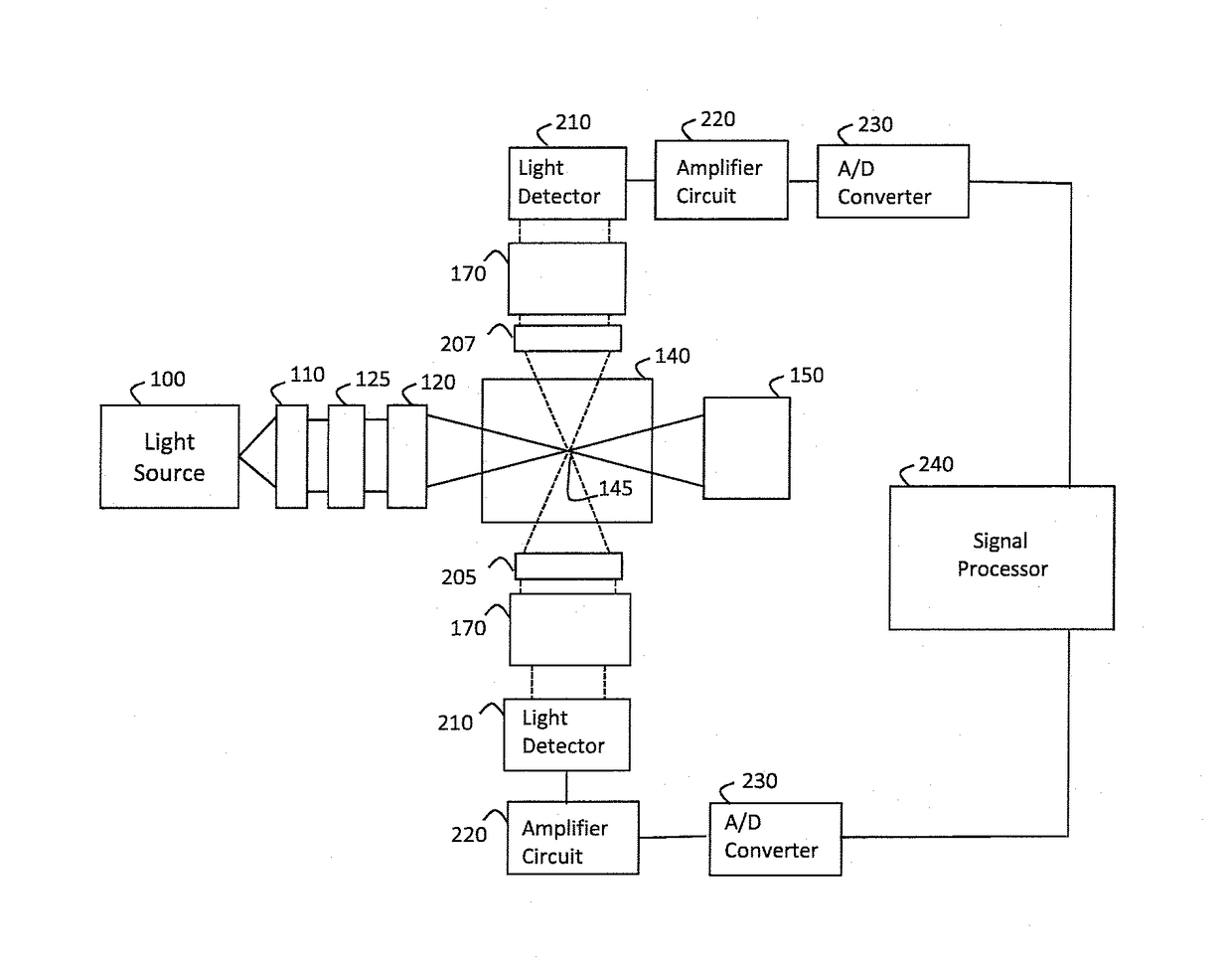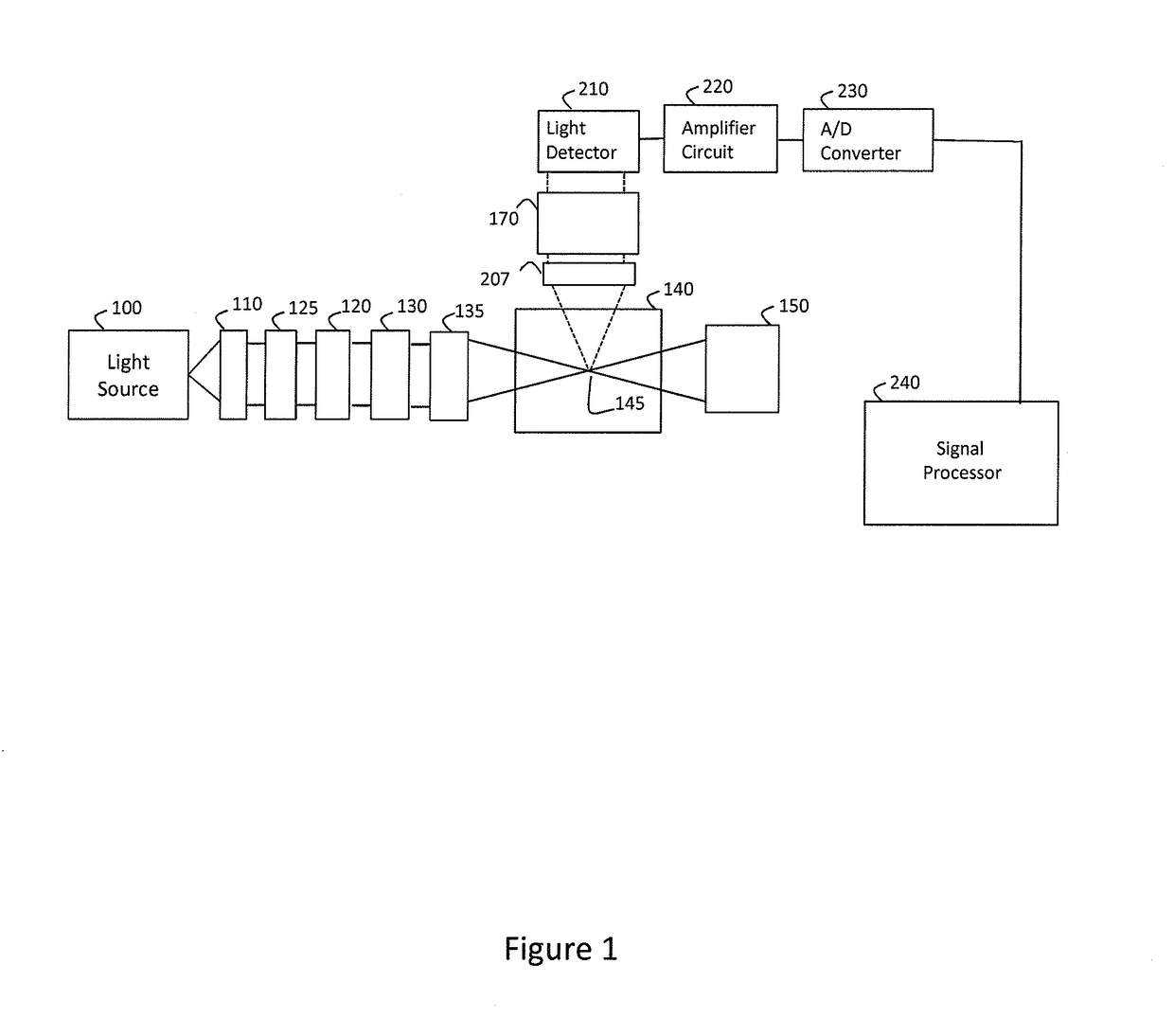Realtime optical method and system for detecting and classifying biological and non-biological particles
a biological and non-biological particle technology, applied in particle and sedimentation analysis, measurement devices, instruments, etc., can solve the problems of limited fielded lif based biological particle detectors, limited fielded lif based biological particle detection, and inability to detect lif based biological particle particles
- Summary
- Abstract
- Description
- Claims
- Application Information
AI Technical Summary
Benefits of technology
Problems solved by technology
Method used
Image
Examples
Embodiment Construction
[0030]The preferred forms of the presented invention will now be described with reference to FIGS. 1-13. The appended claims are not limited to the preferred forms and no term and / or phrase used herein is to be given a meaning other than its ordinary meaning unless it is expressly stated otherwise. The use of like reference numerals indicate the same component and / or feature except when otherwise indicated.
[0031]The preferred forms of the present invention relate to enhanced methods, apparatuses and systems for the detection and classification of biological and non-biological particulates in a real-time manner. The various detection schemes exploit one physical phenomena which involves the interaction of light with a single aerosol particle (i.e., polarized elastic scattering). A second physical phenomena which involves the interaction of light with a single aerosol particle may be used (i.e., fluorescence). In addition to these optical phenomena (i.e., polarized elastic scattering ...
PUM
 Login to View More
Login to View More Abstract
Description
Claims
Application Information
 Login to View More
Login to View More - R&D
- Intellectual Property
- Life Sciences
- Materials
- Tech Scout
- Unparalleled Data Quality
- Higher Quality Content
- 60% Fewer Hallucinations
Browse by: Latest US Patents, China's latest patents, Technical Efficacy Thesaurus, Application Domain, Technology Topic, Popular Technical Reports.
© 2025 PatSnap. All rights reserved.Legal|Privacy policy|Modern Slavery Act Transparency Statement|Sitemap|About US| Contact US: help@patsnap.com



